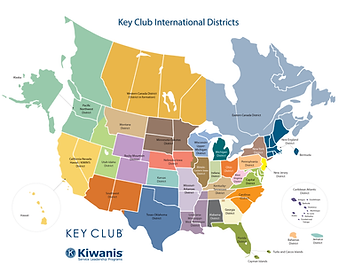OUR HISTORY
1950
I-I District holds its first district convention in Springfield, IL. John Greene is elected first District Governor.


1946
St. Francisville High School receives Charter #0177—founded by Samuel Gray. Marks the beginning of the Illinois-Eastern Iowa (I-I) District.
Key Club opens to females: Kiwanis International approves female membership, transforming club diversity & future growth
1977

1946-1949
New clubs form in Olney, DeKalb, Rock Island, and beyond. By May 1, 1949, 16 clubs exist across the state.


The Lieutenant Governor position is introduced. 10 Lt. Governors are created to mirror the Kiwanis District.
1956

Division numbers are updated to match Kiwanis, improving collaboration and communication between the organizations.
1980
Currently, Key Club International is the world’s largest student-led service organization. This year, we celebrate its 100th anniversary. With more than 251,000 members across 34 districts in 40 countries, Key Club empowers high school students to build leadership skills through meaningful service. Our organization continues to grow—membership surged 30% in 2024 alone—making it a powerful network of young leaders committed to improving their schools and communities.
2025

